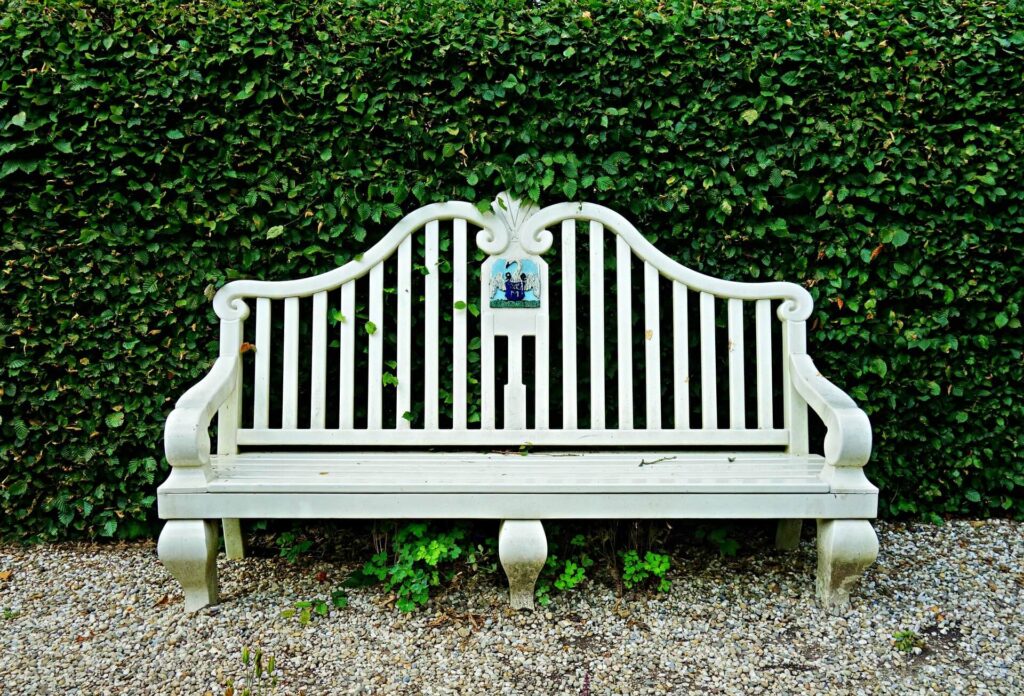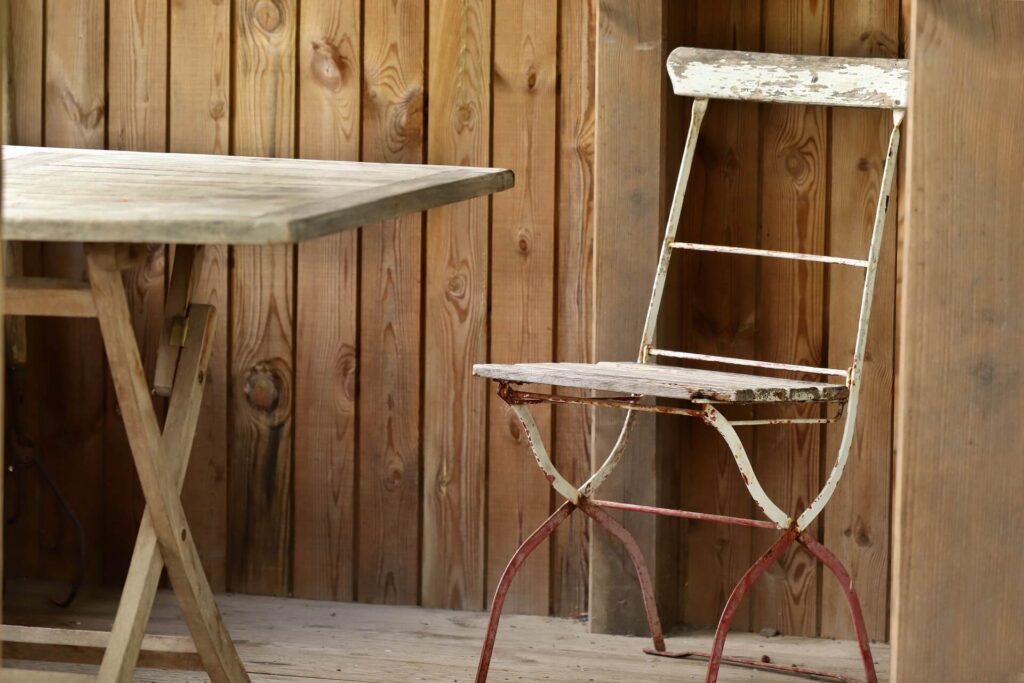Choosing the right garden furniture for your space can transform your outdoor area into a stylish, comfortable, and functional extension of your home. With a plethora of options available, from classic wooden benches to modern metal sets, finding the perfect pieces can seem daunting. This guide, “How to Choose the Right Garden Furniture for Your Space,” will help you navigate the selection process, ensuring that you make informed decisions that suit your needs, taste, and budget.

Understanding Your Outdoor Space
The first step in selecting the perfect garden furniture is to understand your outdoor space. Measure the dimensions of your garden, patio, or balcony to determine how much room you have available. Consider the shape of the area and any existing features such as trees, pathways, or flower beds. This will help you visualize how different furniture pieces will fit and function within the space.
Defining Your Outdoor Furniture Needs
Think about how you plan to use your outdoor area. Do you want a cozy spot for morning coffee, a dining area for family meals, or a lounging space for sunbathing? Defining the primary purpose of your garden furniture will guide your choices. Consider multifunctional pieces that can adapt to various activities, such as extendable tables or modular seating.
Selecting the Right Materials
The material of your garden furniture plays a crucial role in its durability, maintenance, and overall aesthetic. Common materials include:
- Wood: Offers a natural look and is sturdy but requires regular maintenance to prevent weather damage.
- Metal: Durable and often sleek, but can get hot in direct sunlight and may rust if not treated properly.
- Plastic: Lightweight, affordable, and low-maintenance, but may lack the aesthetic appeal of other materials.
- Wicker: Provides a rustic charm and is relatively durable, though it may need protection from harsh weather.
Each material has its advantages and drawbacks, so choose one that fits your climate, maintenance preference, and style.
Choosing Furniture Styles
Garden furniture comes in various styles to match your personal taste and the overall theme of your outdoor space. Popular styles include:
- Traditional: Classic designs often made from wood or wrought iron, featuring intricate details.
- Modern: Sleek, minimalist designs with clean lines and contemporary materials like metal and glass.
- Rustic: Natural, earthy pieces that blend seamlessly with outdoor surroundings, often made from wood or wicker.
- Minimalist: Simple, functional designs with a focus on efficiency and space-saving.
Selecting a style that complements your home’s architecture and your garden’s landscaping will create a cohesive and inviting space.
Comfort and Ergonomics
Comfort is paramount when choosing garden furniture, especially if you plan to spend long periods outside. Look for pieces with ergonomic designs that provide adequate support. Cushions can enhance comfort, but ensure they are weather-resistant. Consider the seating height and depth, back support, and whether the furniture allows for relaxed lounging or upright dining.
Weather Resistance and Durability
Outdoor furniture must withstand various weather conditions, from intense sun to heavy rain. Choose materials known for their weather resistance and durability. For instance, teak wood is naturally resistant to water and insects, while powder-coated aluminum is rust-resistant. Regular maintenance, such as applying sealants or covers, can prolong the lifespan of your furniture.
Space-Saving Furniture Options
If you have a small garden or balcony, space-saving furniture can maximize your area without compromising on comfort or style. Options include:
- Folding Chairs: Easy to store and perfect for small spaces.
- Stackable Furniture: Chairs and tables that can be stacked when not in use.
- Multi-Functional Pieces: Benches with storage, tables that convert to seating, or compact dining sets.
These solutions help you make the most of limited space while keeping your area clutter-free.

Incorporating Color and Aesthetics
Adding color to your garden furniture can enhance the overall look of your outdoor space. Bold colors can create a vibrant atmosphere, while neutral tones offer a calm and sophisticated vibe. Use cushions, throws, and outdoor rugs to introduce color and patterns. Matching your furniture’s color scheme with your garden’s natural elements creates a harmonious aesthetic.
Considering Budget and Value
Garden furniture comes in a wide range of prices, so it’s important to set a budget before you start shopping. Consider the value of the pieces you’re investing in; sometimes, paying a bit more for higher quality can save money in the long run due to increased durability and reduced maintenance. Look for sales, discounts, and second-hand options to find quality furniture within your budget.
Eco-Friendly Furniture Choices
Sustainability is an important consideration for many when choosing garden furniture. Opt for eco-friendly options made from recycled or sustainably sourced materials. Bamboo, recycled plastic, and FSC-certified wood are excellent choices. Additionally, choosing durable pieces that won’t need replacing frequently reduces waste and environmental impact.
Making the Most of Small Spaces
Compact and multifunctional furniture can transform small gardens and balconies into functional and stylish areas. Consider vertical solutions such as wall-mounted planters or fold-down tables. Lightweight furniture that can be easily moved allows you to reconfigure your space as needed, making it versatile and adaptable.
Furniture for Large Gardens
Larger gardens offer more flexibility and opportunities for creativity. Use furniture to create distinct zones for dining, lounging, and entertaining. Statement pieces, such as a large dining table or an oversized sectional, can anchor the space. Incorporate pathways and garden features to guide movement and enhance the layout.
Dining Sets vs. Lounge Sets
Deciding between dining sets and lounge sets depends on how you plan to use your garden. Dining sets are ideal for outdoor meals and gatherings, offering a table and chairs. Lounge sets provide a more relaxed seating arrangement with sofas, armchairs, and coffee tables, perfect for casual lounging and entertaining.
Accessorizing Your Garden Furniture
Accessories can elevate the comfort and style of your garden furniture. Consider adding:
- Cushions and Throws: For added comfort and color.
- Outdoor Rugs: Define seating areas and add texture.
- Planters and Greenery: Bring nature closer and enhance the ambiance.
These elements can personalize your outdoor space and make it more inviting.
Lighting to Complement Furniture
Proper lighting enhances the usability and aesthetics of your garden furniture. Options include:
- Solar Lights: Eco-friendly and easy to install.
- Lanterns: Provide a warm, ambient glow.
- String Lights: Add a festive touch and create a cozy atmosphere.
Lighting can highlight key areas and extend the usability of your garden into the evening.
Furniture Arrangement Tips
Arranging your garden furniture for optimal flow and accessibility ensures a functional and welcoming space. Consider the following tips:
- Create Pathways: Ensure clear routes for easy movement.
- Group Furniture: Arrange pieces to facilitate conversation and interaction.
- Consider Views: Position seating to take advantage of garden views or focal points.
Thoughtful arrangement can enhance both the functionality and aesthetics of your outdoor area.
DIY Garden Furniture Ideas
If you’re handy with tools, DIY garden furniture can be a rewarding and cost-effective option. Ideas include:
- Pallet Furniture: Create sofas, tables, and planters from reclaimed pallets.
- Upcycling Projects: Repurpose old furniture or materials into unique garden pieces.
- Custom Builds: Tailor designs to fit your specific needs and space.
DIY projects allow you to personalize your garden furniture and add a unique touch to your outdoor space.
Maintaining and Cleaning Garden Furniture
Regular maintenance keeps your garden furniture looking great and extends its lifespan. Tips include:
- Cleaning: Use mild soap and water for regular cleaning. Avoid harsh chemicals that can damage the material.
- Staining and Sealing: Protect wood furniture with stains and sealants. Apply as needed, typically once a year.
- Covers: Use protective covers to shield furniture from the elements when not in use.
Proper care ensures your furniture remains in top condition year-round.
Storing Garden Furniture
Proper storage during off-seasons, such as winter, is crucial to protecting your garden furniture. Store pieces in a dry, sheltered area like a garage or shed. If indoor storage isn’t an option, use high-quality protective covers. Disassemble items if possible to save space and reduce wear and tear.
Investing in Quality Pieces
Investing in high-quality garden furniture can offer long-term benefits. Look for craftsmanship, durability, and warranties when purchasing. High-quality pieces often provide better comfort, aesthetics, and longevity, making them a worthwhile investment.
Exploring Custom Furniture Options
Custom garden furniture allows you to tailor pieces to your specific needs and preferences. Consider working with local artisans or custom furniture makers to create unique designs. Custom options can provide a perfect fit for your space and reflect your personal style.
Adjustable and Modular Furniture
Adjustable and modular furniture offers flexibility and adaptability for your garden space. Pieces that can be reconfigured or adjusted to different heights and angles provide versatility for various activities and gatherings. Modular designs allow you to expand or rearrange seating as needed.
Garden Furniture Trends
Stay updated with the latest garden furniture trends to ensure your outdoor space is stylish and contemporary. Current trends include:
- Mixed Materials: Combining wood, metal, and plastic for a unique look.
- Sustainable Designs: Eco-friendly materials and practices.
- Bold Colors: Vibrant hues and patterns for a lively atmosphere.
Incorporating trends can refresh your garden’s look and feel.